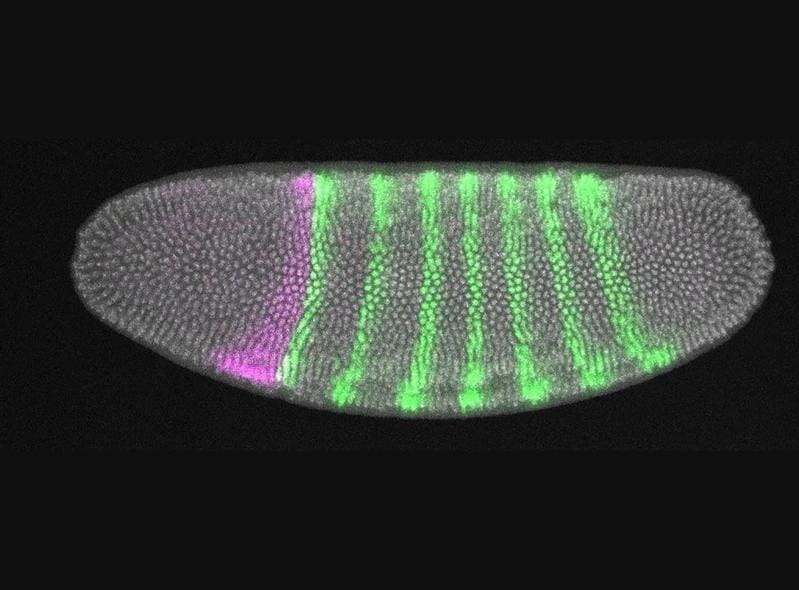Embryos regulate mechanical stresses for stable development
A research team from the University of Hohenheim in Stuttgart and the RIKEN Center for Biosystems Dynamics Research in Kobe, Japan, has discovered how fly embryos control mechanical stress during development. This ability could be crucial for the evolutionary diversity of body plans. The results were published in the journal Nature (DOI: 10.1038/s41586-025-09447-4).
During embryonic development, cells and tissues grow and collide with each other, creating significant mechanical tension. These tensions can jeopardize development and lead to malformations or the death of the embryo. The researchers studied gastrulation, a central developmental stage in which complex tissues such as muscles, skin, nervous system and digestive tract develop from simple cell layers. This process is characterized by intense cell movements, which must be precisely coordinated to avoid damage.

The study shows that fly embryos have developed two different strategies to manage such tensions. In the fruit fly (Drosophila melanogaster), a temporary head furrow forms that serves as a mechanical catch basin. This structure reduces the pressure between the head and trunk tissues and prevents dangerous collisions. If the head furrow is experimentally suppressed, uncontrolled deformations occur, which are often fatal.
Other fly species, such as the midge (Chironomus riparius) or the black soldier fly (Hermetia illucens), use an alternative strategy. Here, cell divisions are aligned so that they are oblique or perpendicular to the tissue layer. This limits the expansion of the fabric and reduces tension, avoiding dangerous folding. By specifically changing the cell division orientation, the researchers were able to experimentally demonstrate these mechanisms.
The results were confirmed by an independent study by the Max Planck Institute of Molecular Cell Biology and Genetics in Dresden, which investigated similar mechanisms with the help of a computer model. Both studies illustrate that the ability to regulate mechanical tension is not only crucial for embryonic development, but has also enabled evolutionary innovations. Different fly species that evolved 250 to 150 million years ago use cell division alignment, while younger species developed the head furrow.
The researchers conclude that evolution is driven not only by genetic changes, but also by the handling of physical forces. This variety of solutions could explain why so many different physique plans have emerged in the animal world.
Original Papers
Patterned invagination prevents mechanical instability during gastrulation | Nature
Divergent evolutionary strategies pre-empt tissue collision in gastrulation | Nature
Editor: X-Press Journalistenb├╝ro GbR
Gender Notice. The personal designations used in this text always refer equally to female, male and diverse persons. Double/triple naming and gendered designations are used for better readability. ected.




